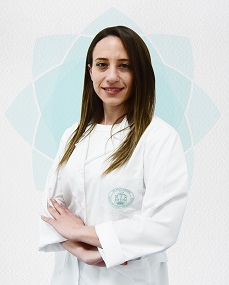
Dr. Suat Günsel University of Kyrenia Hospital, Paediatrics Specialist Nermin Ankay MD. mentioned that leukaemia which is also known as blood cancer, emerges mostly from bone marrow and forms as a result of a single cell getting infected with cancer, reproducing and infesting other cells.
Ankay MD. made a statement on the occasion of May 28-31 International week for children with leukaemia and mentioned that it is the most frequent cancer type which is mostly seen around the ages 2-5 and which can also manifest in any age.
Paediatrics Specialist Nermin Ankay MD. stated that: “Leukaemia is the result of defects in anticarcinogenic or carcinogenic genes in our bodies. The factors which speed up this deformation process are high dose radiation, some viruses, chemical substances, food additives and poisonous gasses. Genetic disorders such as Down syndrome are among the high risk group. Even though some rare leukaemia types can be inherited from family, leukaemia generally is not an inherited disorder.
WHAT ARE THE SYMPTOMS OF LEUKAEMIA? HOW IS IT DIAGNOSED?
Lack of appetite, weight loss, paleness, fever, cyanosis, small red spots on the skin, nosebleeds and bleeding gums, extension of adenoids and bone pain are common symptoms. These symptoms can be seen in various diseases. Leukaemia does not have any specific symptoms. Sometimes, it may not show any symptoms at all. If you are experiencing any of these symptoms you should see a doctor. If leukaemia is suspected after the recommended annual blood test, additional blood and bone marrow tests can be performed to diagnose the disease. The type of leukaemia and principles of treatment can be determined with advanced tests.
HOW IS LEUAKEMIA TREATED?
After it is diagnosed, leukaemia is treated with chemotherapy, followed by bone marrow transplant.
Leukaemia is one of the most treatable childhood cancers. Survival rates vary between the different types of disease. With the help of modern treatment options around 70-75% of acute leukaemia cases can be cured. AML (acute myeloblastic leukaemia) which is one of the common childhood cancer types has survival rate of 90% and more.
To achieve success in treatment it is very important to perform it at a suitable centre which provides a clean and sterile environment, good and balanced nutrition and psychological support. Just like any other drug, leukaemia treatment drugs also have side effects. Some of the side effects are; lesion formation in mouth, weakening in immune system, decrease in blood cells, bleeding, diarrhoea and hair loss.
HOW CAN I PROTECT MY CHILD FROM LEUKAEMIA?
Leukaemia can be diagnosed with a simple annual blood count test. Treatment chance increases with early diagnosis. Nutrition is vital for disease prevention. Children need a balanced diet containing natural and organic products and additive free foods.
Fruits and vegetables must be thoroughly washed before consumption and purified from chemicals. Children should not be exposed to radiation.
Just like any other type of cancer, the treatment period of leukaemia is a long and tough journey. This period can be tough both for the patient and their relatives. Moral support is very important. Seminars and awareness campaigns are held every year to inform people about the disease within the international week for children with leukaemia. Aid campaigns are also organized during this week.”